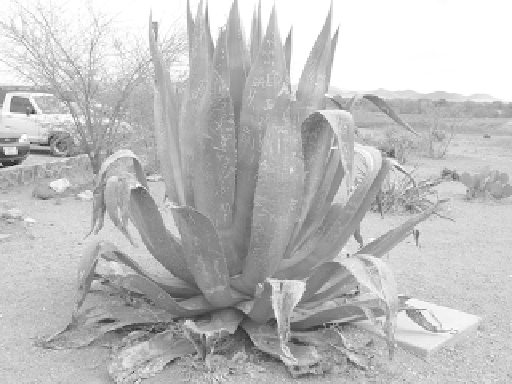Travel Reference
In-Depth Information
Figure 5.3
A vandalized agave plant along a heritage trail in Mexico
common site in many national parks along trails (Deng
et al.
, 2003; Lynn &
Brown, 2003; Magro & Amando de Barros, 2004; Shi
et al.
, 2002) (Figure 5.3).
The soil alterations described in the previous section are an example of
the indirect effects of trail use. Soil compaction usually results in the suffoca-
tion of roots and eventually leads to the death of plants (McQuaid-Cook,
1978). Root exposure is another outcome of heavy use. These also have impli-
cations for erosion and runoff (Li
et al.
, 2005; Magro & Amando de Barros,
2004; Yoo & Kwon, 2004), but they also have major implications for vegeta-
tion growth and change.
Another consequence is the spread of invasive species. This occurs in
several ways. First, forage from dry pastures and commercial animal feed is
often laden with weed seeds. When horses eat the feed, many seeds pass
through their dung and onto trails or beside them (Landsberg
et al.
, 2001).
Horses are not the only culprits, however. Non-native seeds are also known
to spread by human traffic on backpacks, clothing, shoes and camping
equipment (Dickens
et al.
, 2005). Second, pathways in karst caves are
responsible for distributing intrusive micro-organisms in underground cave
systems. Changes in environmental conditions that result from human
intervention, including increased temperatures and humidity, lighting and
greater concentrations of carbon dioxide encourage the colonization and
spread of abundant microflora (e.g. lichens, moss and algae) that continue
to affect the caves' internal ecosystems, but also leave their mark on the
bedrock and substrata (Pulido-Bosch
et al.
, 1997: 148). Third, off-trail distur-
bance encourages the growth of exotic and ruderal (plants that are first to
colonize disturbed soils) species immediately adjacent to footpaths and
tracks. Higher levels of use tend to accelerate the establishment and growth

Search WWH ::

Custom Search